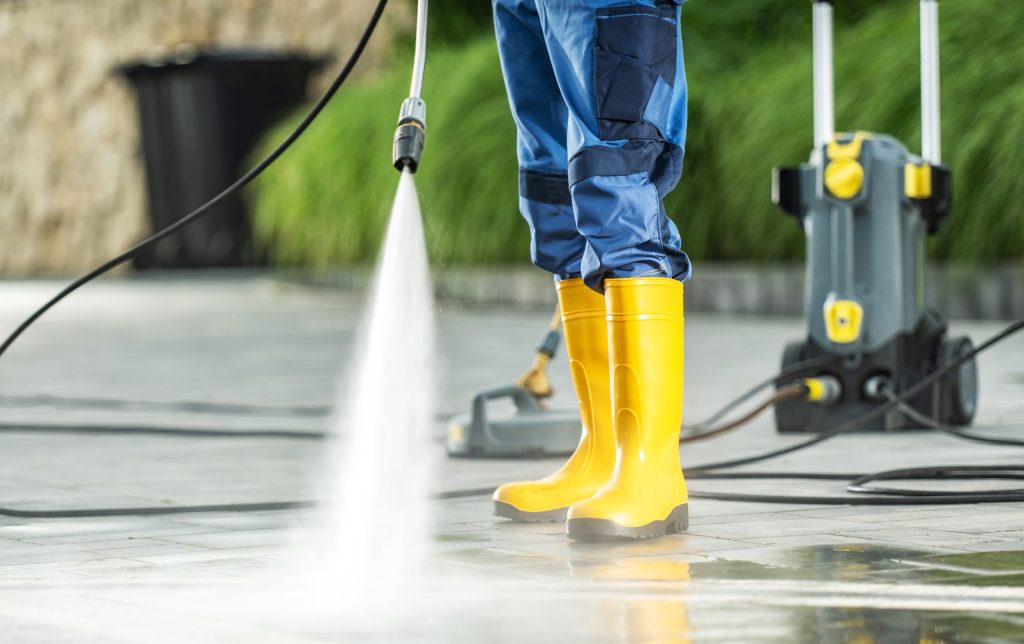Let’s face it—watching layers of dirt, mold, and grime get blasted off a surface with a high-powered stream of water is incredibly satisfying. It’s no surprise that so many homeowners see a dirty driveway or dingy siding and immediately think, “I’ve got this.” But here’s the truth: power washing isn’t always as easy as it looks.
Sure, the results can be amazing—but they can also go very wrong if you don’t know what you’re doing. From stripped paint and gouged wood to water damage behind your siding, there are real risks involved when pressure washing is done incorrectly. And unfortunately, many of those mistakes are only obvious after the damage is done.
The reality is, there’s more to pressure washing than just turning on a machine and aiming it at the dirt. The type of surface, the water pressure, the nozzle tip, even the cleaning solution—all these factors play a role in whether you get a beautifully cleaned surface or an expensive repair job.
That’s why this guide exists.
In the next few sections, we’ll walk you through everything most homeowners don’t know about pressure washing—from the difference between pressure and power washing to common DIY mistakes and pro tips that protect your home. Whether you’re looking to DIY or hire a pro, you’ll be equipped with the right knowledge to make smart, safe choices.
Because when it’s done properly, pressure washing doesn’t just clean—it restores, protects, and adds serious curb appeal.
The Difference Between Pressure Washing and Power Washing (And Why It Matters)
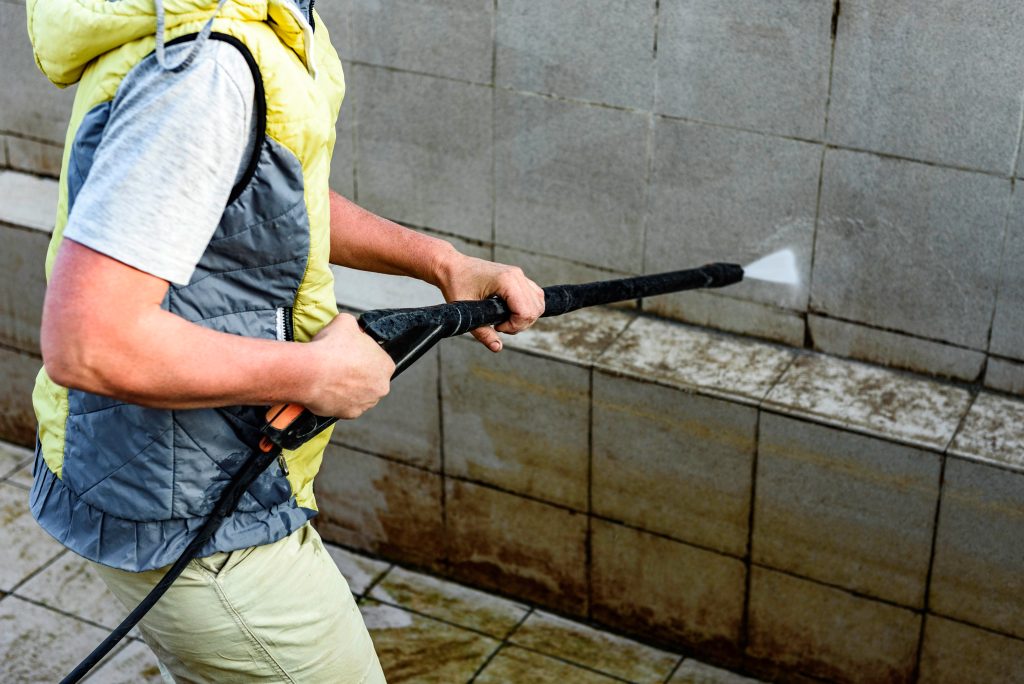
Most people use the terms “pressure washing” and “power washing” interchangeably—and to be fair, they do look pretty similar at a glance. Both use high-pressure water to clean dirt, grime, and buildup from exterior surfaces. But there’s one key difference that can seriously affect the outcome: heat.
Pressure washing relies on unheated water and is ideal for general cleaning tasks—think sidewalks, vinyl siding, and outdoor furniture. It’s strong enough to break up dirt but gentle enough to avoid damaging sensitive surfaces when done correctly.
Power washing, on the other hand, uses heated water. That added heat helps break down grease, oil, and stubborn stains more effectively. It’s often the go-to choice for heavily soiled concrete, greasy garage floors, or commercial jobs where sanitation is a priority.
So why does this distinction matter to you as a homeowner? Because using the wrong method on the wrong surface can cause more harm than good. For example, applying heated water to delicate wood or older brick might lead to cracks or warping. On the flip side, using cold water on a greasy driveway probably won’t do much more than shuffle the dirt around.
When considering pressure washing for your home, knowing what you’re cleaning—and what kind of washer is being used—can mean the difference between a refreshed exterior and unintended damage. It’s all about matching the method to the material.
Understanding this simple but crucial difference can save you time, money, and a whole lot of regret.
The Hidden Risks of DIY Washing: Damage You Can’t Undo
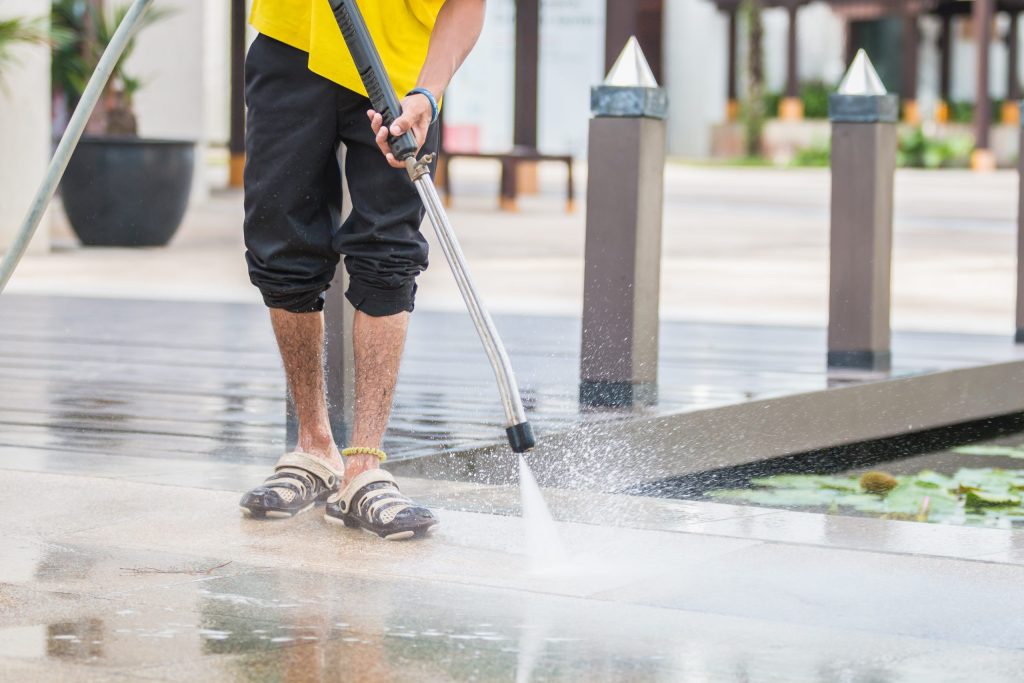
There’s a reason you can find so many “pressure washing fails” online—they happen more often than most people think. While grabbing a pressure washer from your local hardware store might seem like a quick way to freshen up your siding or driveway, DIY cleaning can easily turn into DIY damage.
The most common issue? Using too much pressure. It’s surprisingly easy to blast holes through vinyl siding, strip paint off wood, or even etch permanent marks into concrete. Once that damage is done, fixing it isn’t as simple as repainting or rinsing again—it can require costly repairs or full replacements.
Another common mistake is using the wrong nozzle or spray angle. Too narrow a spray can concentrate water like a blade, while the wrong angle can push water up under siding, shingles, or window seals, leading to moisture buildup and mold problems down the road.
Even the surface you’re standing on can be at risk. Slippery surfaces become even more dangerous when wet and soapy. And without the right technique, you can unknowingly direct runoff into flower beds, electrical outlets, or your foundation.
That’s why it’s no surprise that many homeowners try it once and then search for power washing professionals who know how to handle different materials and conditions. It’s not about overcomplicating a simple task—it’s about knowing how to do it right.
DIY pressure washing may seem easy enough, but one small mistake can create lasting consequences. Knowing what to avoid is just as important as knowing what to clean.
What Professionals Know That Homeowners Often Don’t
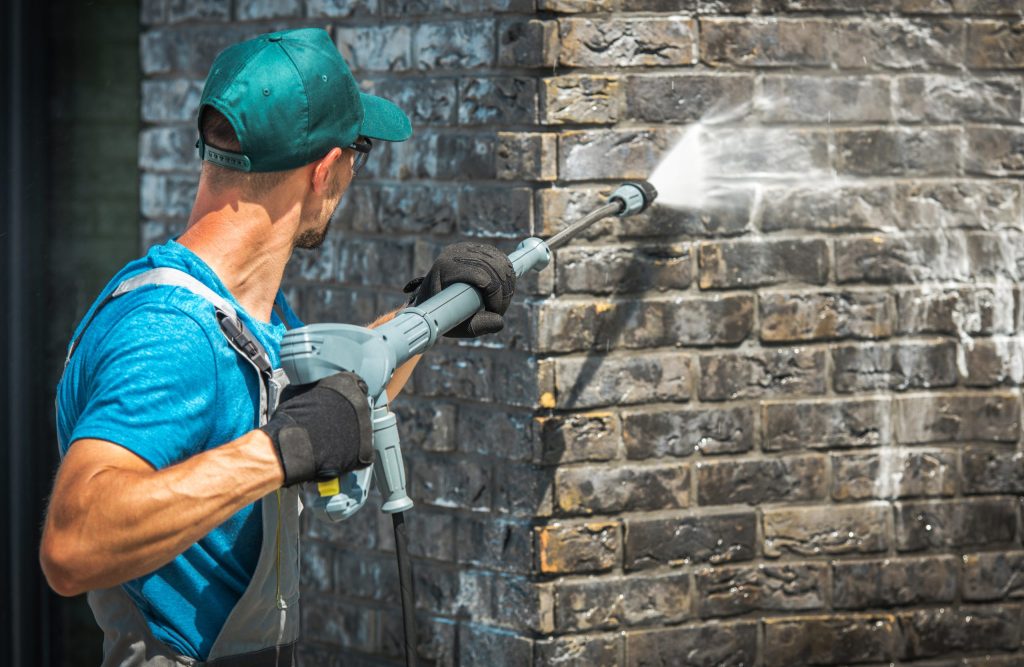
There’s a reason professional pressure washing companies stay busy year-round. While it might look like they’re just spraying water, the reality is that seasoned pros bring a deep understanding of technique, safety, and surface care that most homeowners simply don’t have.
One of the biggest things professionals know is how different surfaces react to different pressures and cleaning solutions. What works for a concrete driveway could easily damage wood decking or crack old brick mortar. They’re trained to assess the condition of each surface and choose the correct PSI (pounds per square inch), nozzle type, and cleaning solution for the job.
Pros also understand the science behind the cleaning agents they use. They know which detergents are safe for plants, which ones break down mold and mildew, and how to prevent streaking or staining on delicate materials. It’s not just about blasting grime—it’s about achieving a deep clean without harming anything in the process.
There’s also the factor of liability. Professional power washing company carry insurance, which means if something does go wrong, you’re not left footing the bill. Plus, many companies offer satisfaction guarantees or warranties on their work—something you won’t get with a DIY attempt.
It’s no wonder that after one too many mistakes, many homeowners end up searching for a power washer near me just to avoid the stress and guesswork.
Hiring a professional isn’t just about convenience—it’s about doing it right the first time. When you trust someone who does this day in and day out, you get peace of mind, better results, and far less risk.
Sometimes, the smartest DIY move you can make is knowing when to call in the pros.
What Should Be Power Washed—And What Shouldn’t
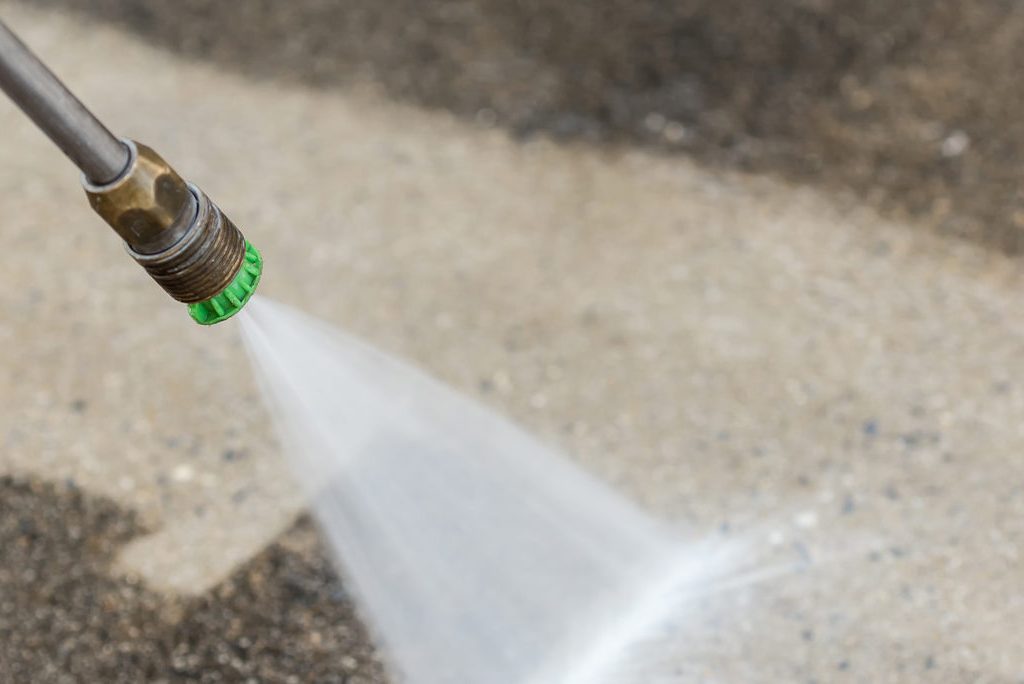
It’s easy to assume that if something’s outside, it can handle being power washed. After all, these surfaces deal with rain, dirt, and sunlight every day—what’s a little water pressure, right? Unfortunately, that kind of thinking is what leads to cracked siding, etched wood, and ruined landscaping.
Let’s break it down.
Safe to power wash: Concrete driveways, sidewalks, stone pavers, brick patios, vinyl siding, and metal railings typically handle pressure washing well—when done correctly. These materials are durable and, in most cases, benefit from an annual deep clean to remove mildew, grime, and stains that build up over time.
Use caution or skip entirely: Wood decks, painted surfaces, roof shingles, stucco, and older masonry are a different story. These materials can be damaged by high pressure or improper techniques. For example, blasting a painted wood fence can peel the finish right off, and hitting roof shingles with high pressure can loosen or dislodge them completely.
This is where experience makes all the difference. A professional pressure washing company will know how to adjust pressure levels and nozzle types based on the surface they’re cleaning. They’ll use soft washing methods when needed—low-pressure techniques paired with specialized cleaning solutions to gently clean without causing damage.
It’s also worth noting that certain materials, like composite decking or outdoor furniture, may require specialized care or manufacturer-recommended methods.
When in doubt, don’t guess—ask a pro or check manufacturer guidelines. Just because a surface can be washed doesn’t mean it should be blasted with full force.
Power washing is a great tool—but only when it’s used with care and know-how. Understanding what to clean (and how) is key to protecting your home’s exterior and keeping it looking great for years to come.
Also read: Top Benefits of Pressure Washing in Round Lake’s Seasonal Climate
How to Prepare Your Home for Power Washing
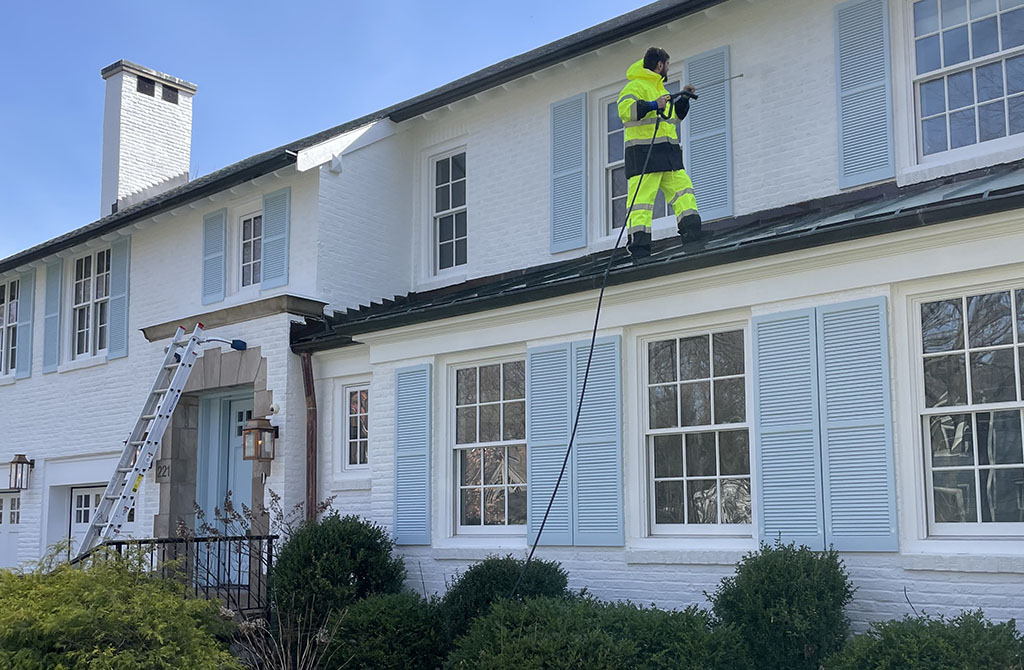
Whether you’re tackling the job yourself or hiring a pro, preparing your home properly is one of the most overlooked (but crucial) steps in the cleaning process. A little prep work goes a long way in ensuring the job is safe, efficient, and delivers spotless results.
Start by clearing the area. Move furniture, potted plants, grills, toys—anything that might get in the way or be damaged by water or cleaning solutions. This not only protects your belongings but gives you or your contractor room to move freely without obstacles.
Next, cover anything you don’t want wet. That includes electrical outlets, doorbells, light fixtures, and delicate plants. Use plastic sheeting or waterproof tarps, and don’t forget to tape things down so they don’t shift in the wind.
Check your windows and doors to make sure they’re fully closed and sealed. If you have any damaged seals or cracked glass, you’ll want to get those fixed before spraying begins. Power washing around leaky windows can easily lead to water damage inside your home.
If you’re hiring a professional, they may take care of some of these steps, but it’s always a good idea to ask what’s expected beforehand. Being prepared helps the process go smoothly and ensures you get the best results possible.
Many people don’t realize that poor prep is one of the most common causes of unexpected issues during power washing. Water intrusion, stained siding, or damage to outdoor decor can often be avoided with just 20 minutes of setup.
So before the water starts flowing, take a few extra minutes to prep your space. It’s a small step that can make a big difference.
A Cleaner Home Starts with Smarter Washing
Power washing may seem like a simple task, but as you’ve learned, there’s a lot more to it than just turning on a hose and blasting away dirt. From understanding the difference between power and pressure washing to avoiding DIY damage and prepping your space properly, each step plays a critical role in protecting your home and getting the best results.
We’ve uncovered the risks of going it alone, the value professionals bring to the job, and which surfaces should (and shouldn’t) be cleaned with high-pressure tools. Most importantly, we’ve shown that when done right, pressure washing is more than just a cosmetic upgrade—it’s smart home maintenance that extends the life and look of your exterior surfaces.
So what’s next? If you’re considering a DIY job, take time to prepare and research the right tools and techniques. If you’d rather skip the risk and hassle, reach out to a trusted local expert who understands how to do the job safely and effectively.
Ready to give your home the deep clean it deserves? Explore our additional resources or contact a professional pressure washing company to get started. A fresh, damage-free exterior is only a smart wash away.

